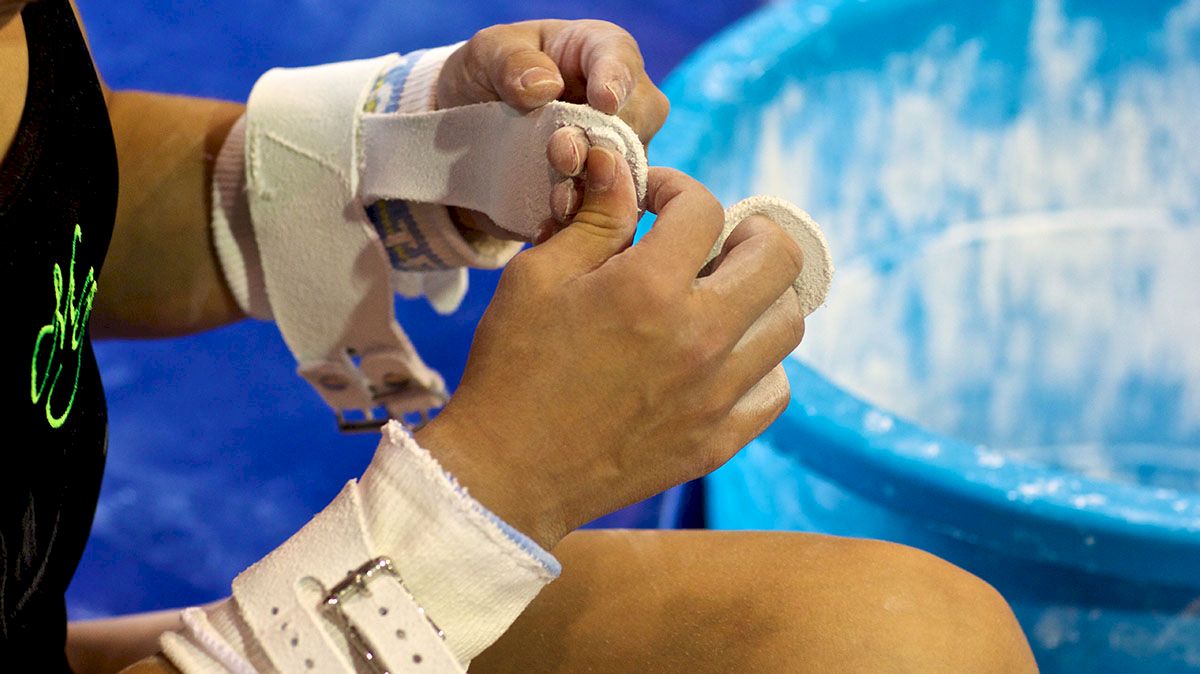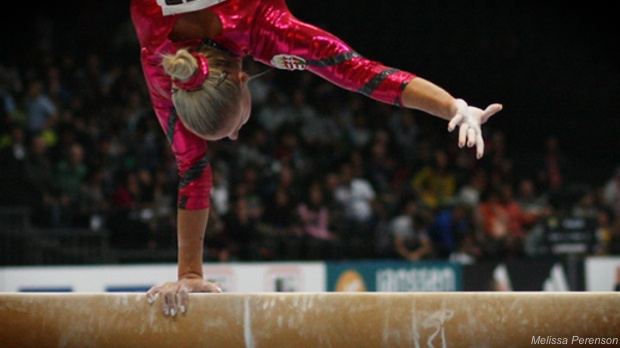Health Bites: Packing on Power With Protein
Health Bites: Packing on Power With Protein
Health Bites: Packing on Power With Protein

By Karen Psiaki, RDN
IOC Certified in Sports Nutrition
My name is Karen, and I’m a Registered Dietitian as well as a former gymnast. Over the next several weeks, I will be writing about health and nutrition topics for gymnasts, ranging from body image and weight management to hydration, meal timing, and specific nutrient needs. If you have a nutrition question or topic you’d like me to cover, write it in the comment section below or send Gymnastike an email!
-------------
-------------
When you think of protein, what comes to mind? For me, the first mental image is that of a muscle-bound body builder a-la Arnold Schwarzenegger in Terminator. But these musclemen are not the only ones who need to concern themselves with protein!
Protein is one of the three macronutrients that we all need in our diets (along with carbs, which we already addressed, and fat, which we’ll discuss next week). Protein is the building block for muscles, and it also plays an important role in cell replication, metabolism, and a whole range of other body functions! For athletes, protein is especially important for building muscle mass and repairing muscle damage after tough, stressful workouts. It also helps to meet energy needs throughout the day and help athletes feel full, or “satiated,” for periods of time when they can’t necessarily eat.
There are 20 different types of molecules, called amino acids, which make up the various kinds of proteins found in nature. Every type of protein, whether it’s from an animal or plant source, has a unique amino acid profile that affects how well it’s absorbed by our bodies and the ways we can use it. Animal products are generally better absorbed by the body and have a more complete amino acid profile. But no worries for you vegetarians out there— it’s also possible to get all of the protein you need from plant sources alone! It just takes a bit more careful planning. (Sorry if I’m getting a bit too “sciency” for you, but it’s just so interesting!)
Now that you know a bit about protein, let’s talk specific guidelines for gymnasts.


How Much Do I Need?
- Gymnasts need to eat at least 0.5g/lb of body weight each day to maintain their protein stores. (So, for a 90lb gymnast, this would be at least 45g per day.)
- For those looking to build muscle and increase strength, intake should increase to as much as 1g/lb of body weight. (So for our 90lb gymnast, this would mean eating as much as 90g per day.)
- Spread out protein intake throughout the day rather than eating it all at one meal. Make sure to get some within the first hour after a workout!
- To find out the protein content of various foods, check out this helpful list.
Which Foods Are High In Protein?
- Animal sources:
o Lean beef, pork, chicken, turkey, seafood, venison, and bison.
o Egg white... it has the same amino acid makeup as our muscles! How cool is that?!
o Low fat dairy (ex: skim, 1% or 2% milk, low fat yogurt or part-skim cheese)
- Plant sources:
o Beans and peas (especially lentils and kidney, black, and pinto beans)
o Tempeh, tofu and soy milk
o Nuts and seeds
o Whole grain bread, cereal, rice, or pasta
o Bulgar, oats, quinoa, and other whole grains
Tips for Protein Prep
o To limit fat, trim the skin off of poultry and cut all visible fat off of meats.
o Avoid frying meats in oil or grease because this adds unnecessary fat and calories.
o The leanest cuts of meat contain the words “loin” or “round” in their names.
o Steer clear of cuts with lots of marbling (white streaks in the meat).
o The leanest cuts of meat contain the words “loin” or “round” in their names.
o Steer clear of cuts with lots of marbling (white streaks in the meat).
o To get the most out of plant proteins, consider combinations that together offer a more complete amino acid profile (ex: rice and beans, peanut butter on whole wheat bread).
Do I Need a Protein Supplement?
- No, most athletes don’t need supplements if they eat a well-rounded diet.
- They may be needed in special cases like when other protein sources aren’t available.
- No, most athletes don’t need supplements if they eat a well-rounded diet.
- They may be needed in special cases like when other protein sources aren’t available.
- If you do need a supplement, whey protein is generally a safe, effective option.
Related:
Shedding Light on the Carbohydrate Debate
Meal and Snack Timing
Body Image and Disordered Eating
Nutrition's F-Word
Nutrition During Injury Recovery
Related:
Shedding Light on the Carbohydrate Debate
Meal and Snack Timing
Body Image and Disordered Eating
Nutrition's F-Word
Nutrition During Injury Recovery